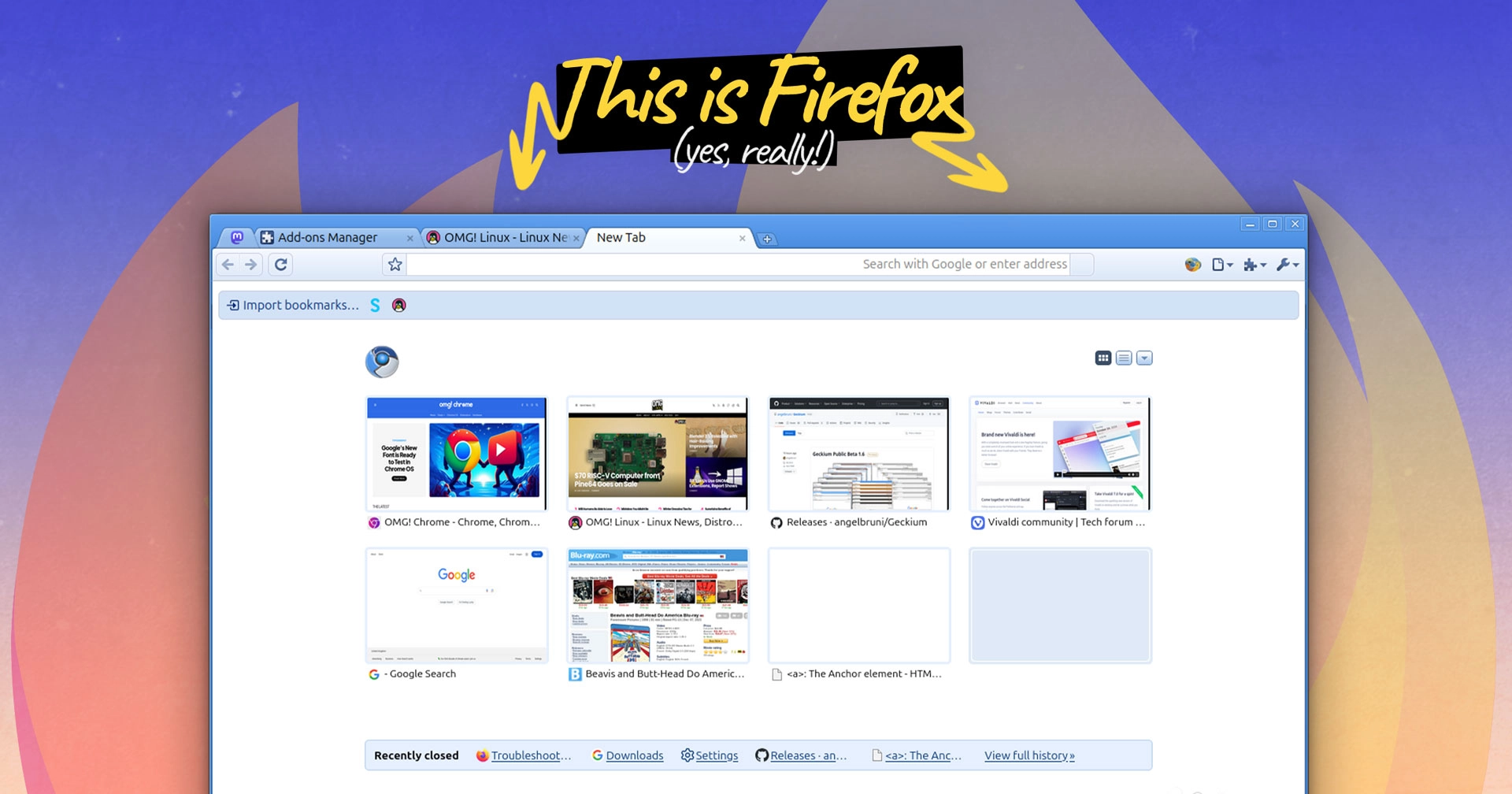Have you ever felt a wave of nostalgia for the appearance of web browsers from the past, yet are hesitant to deal with the challenges of running an outdated browser on a contemporary operating system?
To be honest, you might not, but after exploring the potential of the Geckium project, you just might!
Before moving forward, let me clarify that this post is a showcase, not a declaration. I’m not here to convince anyone about the merits of this endeavor since it’s not essential – it’s as ‘necessary’ as customizing Ubuntu to resemble a Mac or adjusting a tiling window manager to mimic a scene from Blade Runner, and so on.
In other words, people do it because they choose to.
What exactly does Geckium accomplish?
I’ll allow the team to provide the details:
Geckium is a modification for Mozilla Firefox that enhances CSS and JavaScript, recreating the aesthetic and usability of earlier Chromium (or Google Chrome) versions, specifically from 1.0 to 58. In addition, it introduces support for Chromium themes in Firefox, highlighting lesser-known prerelease content while integrating new elements into the classic design.
If you are a regular visitor and feel a sense of familiarity, you haven’t traveled back in time: I previously highlighted a similar initiative, Silverfox, earlier this year. Like Geckium, Silverfox utilized smart JavaScript and CSS adjustments to give Firefox ESR the appearance of the traditional Google Chrome/ium interface.
While Silverfox had potential, it was discontinued, leading to the development of its successor, Geckium, which I find quite appealing in terms of its name.
This new option provides a range of “looks” inspired by Google Chrome/Chromium from versions 1.0 to 58, striving for authenticity despite the evolution of modern technologies.
Trapezoid tabs, a new tab button resembling a parallelogram, streamlined speed dial features, and informative in-app bars, along with a detective figure in Incognito mode, nostalgic profile avatars, a wrench menu, chrome’s rectangular window buttons, recreated settings, pages for errors, and extensions…
You get the picture.
Having explored this myself (after extensively blogging about Google Chrome’s formative years on this site and a sister site focused on Chrome/ium and Chrome OS), this project certainly evokes some warm feelings (no, not the kind you think).
Moreover, the team has seized the chance to incorporate numerous additions, combining early experimental features and playful surprises from the initial Linux alphas with some modern enhancements. For example, if you opt for the theme featuring the colored title bar, it can be configured to utilize the system’s accent color.
Geckium is compatible with various operating systems including Linux, Windows 7 and later, and macOS. However, it’s essential to note that older versions of macOS may not render as accurately due to limited asset resources. Additionally, the theme is not applicable to the Firefox snap or Flathub versions, and compatibility may differ with various forks.
To capture my screenshots, I downloaded the official Firefox Linux binary edition and applied the modifications as described on the Geckium GitHub page for each supported platform, since the provided Firefox snap that comes with Ubuntu is not compatible.
Try it out, or don’t – you do you!
As I mentioned earlier, there is a strong need to utilize this. Anyone questioning “why?” is presenting a query that lacks a straightforward response. If you don’t understand it, then perhaps it’s not for you.
However, if you are intrigued by the idea of customizing Firefox to resemble the classic Google Chrome interface (from a time when Google was not viewed with skepticism and negativity), follow the links provided to give it a try. It is currently in beta, but since it’s essentially a ‘hack’, that should not deter you.
Thanks, Dominic
